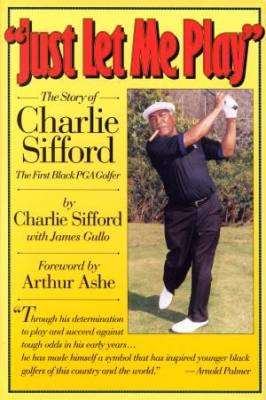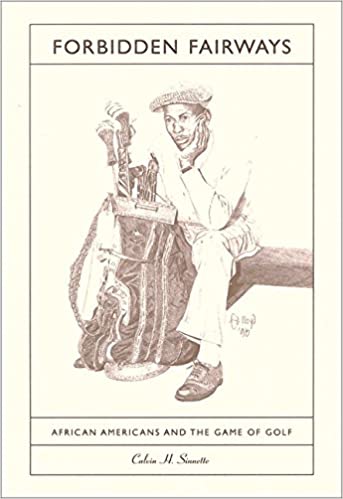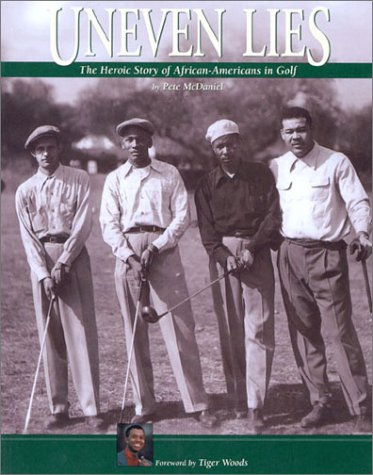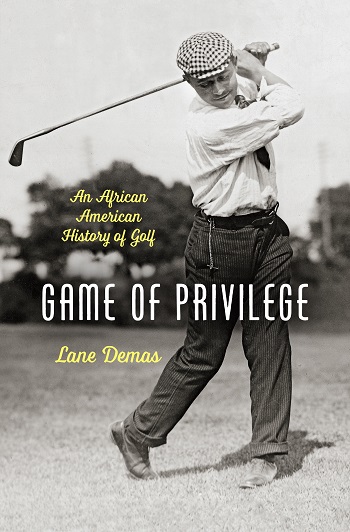On July 2 the PGA of America managed its equivalent of toppling a Confederate general statue by renaming the Horton Smith Award the PGA Professional Development Award.
As PGA President Suzy Whaley put it, “In renaming the Horton Smith Award, the PGA of America is taking ownership of a failed chapter in our history that resulted in excluding many from achieving their dreams of earning the coveted PGA Member badge and advancing the game of golf. We need to do all we can to ensure the PGA of America is defined by inclusion. Part of our mission to grow the game is about welcoming all and bringing diversity to the sport.”
 That clearly wasn’t Horton Smith’s goal. The two-time Masters winner (including the first) was the PGA President from 1952 to 1954, when the association administered all the sanctioned tour events and still had its Caucasian-only clause in effect. And which it unaccountably maintained until 1961, long after other major sports had integrated.
That clearly wasn’t Horton Smith’s goal. The two-time Masters winner (including the first) was the PGA President from 1952 to 1954, when the association administered all the sanctioned tour events and still had its Caucasian-only clause in effect. And which it unaccountably maintained until 1961, long after other major sports had integrated.
Still, some local tournaments merely co-sponsored by the PGA, mainly on the west coast, had begun admitting Black players in spite of the rule. But it was still a struggle.
In the 1952 Phoenix Open Charlie Sifford, along with boxing champ Joe Louis, players Ted Rhodes, Bill Spiller and two amateur players were told to head out early, before all the white players teed off (or had even arrived).
When they reached the first green, Sifford wrote in his 1992 memoir, Just Let Me Play, “…somebody had been there before us. The cup was full of human shit, and from the looks and smell of it, it hadn’t been too long before we got there that the cup had been filled.”
It’s too soon to know what our current chapter of history is going to look like further down the road. But it seemed like a good time to recall a few of the books that chronicle the hurdles that golfers of color have had to overcome in the game’s long history.
Sifford’s book, co-written with Jim Gullo (British American Publishing, 1992), is subtitled “The Story of Charlie Sifford, the First Black PGA Golfer,” and so he was, earning a Tour card in 1960 when he was 39.
 Sifford was a little like Satchel Paige, moving from the Negro Leagues to Major League Baseball when he was a little past his prime. But Sifford won twice on Tour (the 1967 Greater Hartford Open and the 1969 Los Angeles Open), after years of consistent success on the United Golf Association tour, including five straight wins (1952-1956) in the National Negro Open (he won a sixth time in 1960).
Sifford was a little like Satchel Paige, moving from the Negro Leagues to Major League Baseball when he was a little past his prime. But Sifford won twice on Tour (the 1967 Greater Hartford Open and the 1969 Los Angeles Open), after years of consistent success on the United Golf Association tour, including five straight wins (1952-1956) in the National Negro Open (he won a sixth time in 1960).
Sifford’s recognition came late, but he did receive his due—induction into the World Golf Hall of Fame, a Presidential Medal of Freedom bestowed by President Barack Obama, an Honorary Degree from the University of St. Andrews and a host of other awards. Tiger Woods named his son, Charlie, after Sifford.
If Sifford was the path-breaker onto the Tour, the broader history of golf and people of color is told in Forbidden Fairways by Calvin Sinnette (Sleeping Bear Press, 1998), Uneven Lies by Pete McDaniel (The American Golfer, 2000) and Game of Privilege by Lane Demas (University of North Carolina Press, 2017), previously reviewed here.
All of these cover much of the same ground, from the earliest days of golf in America right up to the Tiger Woods era, but all differ in approach. Sinnette’s is the most anecdotal and readable; McDaniel’s is the best coffee table book, loaded with photographs; Demas, an historian, takes the most comprehensive historical look. If his prose sometimes veers toward the academic, the volume’s breadth and overall historical context helped Demas snag the USGA’s Herbert Warren Wind Book Award in 2017.
 In each we read about John Shippen, likely the first home-grown U.S. golf pro who along with his friend Oscar Bunn, a Native American of the Shinnecock Tribe, played in the second U.S. Open, at Shinnecock Hills in 1896.
In each we read about John Shippen, likely the first home-grown U.S. golf pro who along with his friend Oscar Bunn, a Native American of the Shinnecock Tribe, played in the second U.S. Open, at Shinnecock Hills in 1896.
Their participation was not without a threatened boycott from the 35 or so other golfers until USGA president Theodore Havemeyer said the two would play in the tournament even if they were the only two who did play. The rest relented, and Shippen went on to tie for fifth and pocketed $25 for the effort.
If Shippen’s career was an early bright spot, more exclusionary times were to come. With the establishment of the PGA in 1916 an unspoken segregation went into effect; the Caucasian-only clause was put into writing in 1934.
 One is tempted to call the stories of early pioneers—Spiller, Rhodes, Walter Speedy, Alfred “Tup” Holmes, Joe Bartholomew, William Powell—horror stories, but they’re also tales of remarkable perseverance in the face of intolerance.
One is tempted to call the stories of early pioneers—Spiller, Rhodes, Walter Speedy, Alfred “Tup” Holmes, Joe Bartholomew, William Powell—horror stories, but they’re also tales of remarkable perseverance in the face of intolerance.
Outside the professional ranks, Blacks had trouble even getting onto golf courses. Demas in particular shows how the desire to play fed into the civil rights movement of the 50’s and 60’s.
Alfred “Tup” Holmes brought a golf desegregation suit against the city of Atlanta in 1955 that, Demas argues, was just as critical to societal history as Brown v. Board of Education.
Holmes was as determined to play as Sifford was to compete. While civil rights sit-ins were spreading throughout the south—begun at a Woolworth’s lunch counter in Greensboro, North Carolina in 1960—Sifford became the first Black to play in a PGA Tour event in the south in 1961: at the Greater Greensboro Open.
 He shot a 68 in the opening round and led the tournament. But playing with state troopers following him around, dealing with hecklers on the course and deflecting threats off it, led to a shaky 75 on the last day, and a fourth place finish. But he’d made history, and six months later the Caucasian-only clause was gone.
He shot a 68 in the opening round and led the tournament. But playing with state troopers following him around, dealing with hecklers on the course and deflecting threats off it, led to a shaky 75 on the last day, and a fourth place finish. But he’d made history, and six months later the Caucasian-only clause was gone.
This piece first appeared in the Aug-Sept 2020 issue of Golf Oklahoma in slightly different form.
